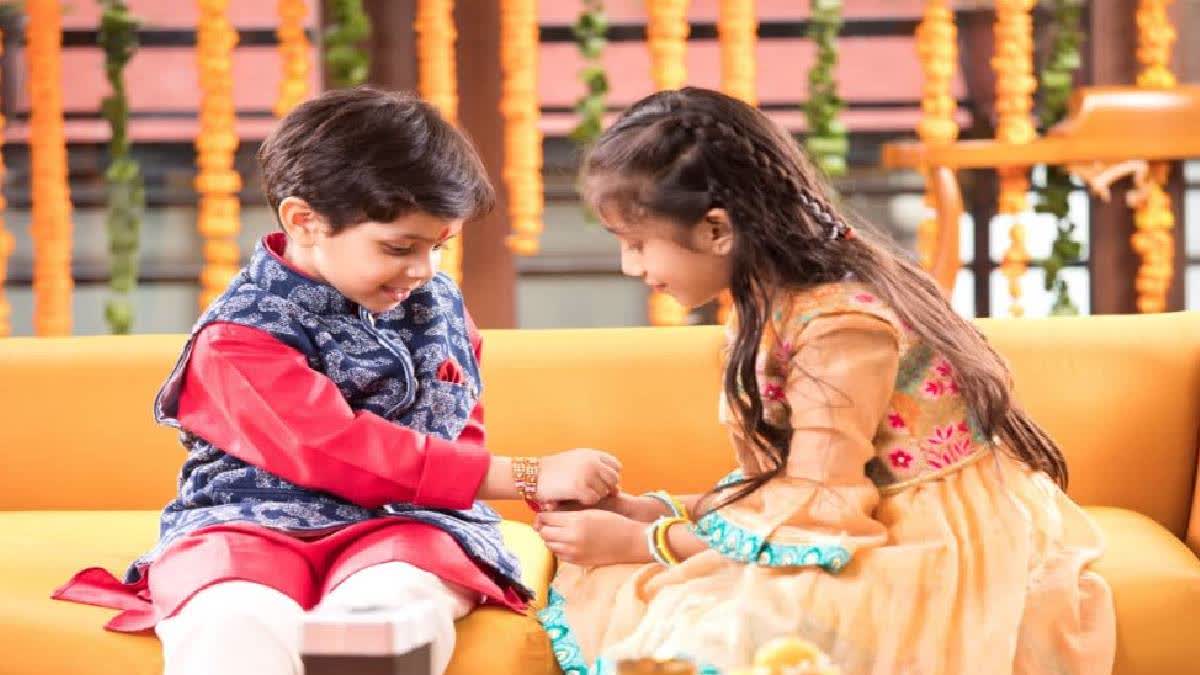Hyderabad: The 'Rakhi Pournami' ceremony stands as a poignant symbol of the unbreakable family bond in India, epitomising the sacred connections of brotherhood and sisterhood.
What started as a cherished tradition in North India has now woven its way into the fabric of the entire nation. During the full moon of Shravan, a sacred thread, known as 'Rakshika' or 'Rakhi,' adorns the wrist of a brother, solidifying the deep connection with his sister.
With full hearts, sisters place a 'Vijay Tilak' on their brothers' foreheads, tie the 'raksha' on their right hands, offer 'mangalharati,' and share a sweet treat. Subsequently, they light a lamp at the temple, seeking divine blessings. The intricate process is detailed in the 'Vrata Chudamani.'
The essence of 'Rakshaka Pournami' is beautifully depicted in the Bhavishyottara Purana. Yamuna, the sister of Lord Yama, prayed for her brother's everlasting success through the good intentions of this festival, and Lord Yama granted her wish. Subhadra, wishing for protection and well-being for her brother, Lord Krishna, through the Rakshasutra, received enthusiastic approval. Lord Brihaspati tied Rakshasutra to Indra, ensuring his triumph in the battle of Gods and demons. The Mahabharata recounts how Dharmaraja and his brothers wore protective threads to aid the Pandavas' victory at Kurukshetra.
On this auspicious full moon, the wisdom of Hayagriva, the greatest of all, emerged. As per Puranas, Lord Parameshwara bestowed wealth upon Mahalakshmi and knowledge upon Maha Saraswati during the full moon of Shravana. The 'Sharabha Samhita' tells us that the Almighty created the Sanskrit language on this day and entrusted it to Lord Brahma as a reservoir of knowledge.
Renowned figures have hailed Rakhi as a "bridge of national unity," as Rabindranath Tagore described it, and during the struggle for independence, Lokmanya Balgangadhar Tilak referred to it as "Swechchabharat Rakshaparv." The festival takes on various names in different states - 'Pauvati Pournami' in Tamil Nadu and Kerala, 'Nariyal Pournami' in Maharashtra where a whole coconut is tossed into the sea to pray for rain, 'Kajari Pournami' in Madhya Pradesh, 'Janai Pournami' in North East India, 'Pavitropanathi' in Gujarat, and 'Rulan Pournami' in Bengal and Odisha.
In the Sanatan tradition, this full moon is referred to as the 'Jandhya full moon.' The 'Yajnopaveeta,' or sacred thread, is divided into three segments, symbolising health, energy, and riches, representing the Deva, Pitru, and Rushi. The 'Jandhya's three knots are the 'Trikalas' indicators, signifying a union of collective spirit, auspicious thoughts, and further prosperity.
Also Read: Raksha Bandhan takes a green twist: 46-year crusader ties protection threads to trees
'Rakhi Pournami', therefore, serves as a beautiful amalgamation of 'Samashti Bhavana' (unity), 'Shubha Kamana' (auspicious thinking), and abundant blessings.
Also Read: Innovative artists redefine Raksha Bandhan 2023 with world-record rakhis



